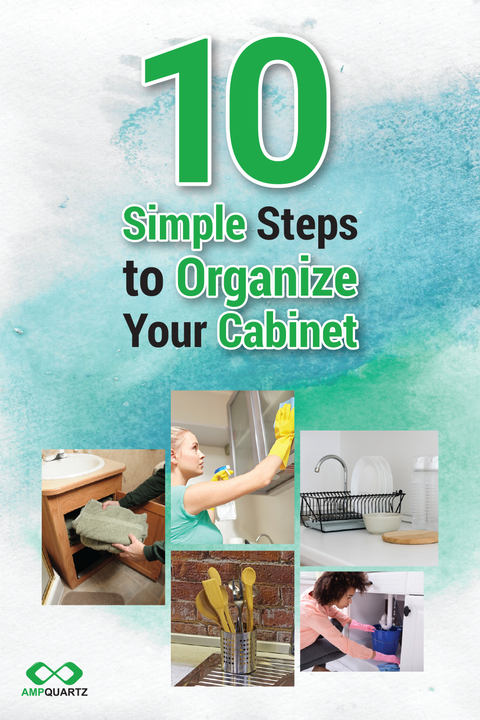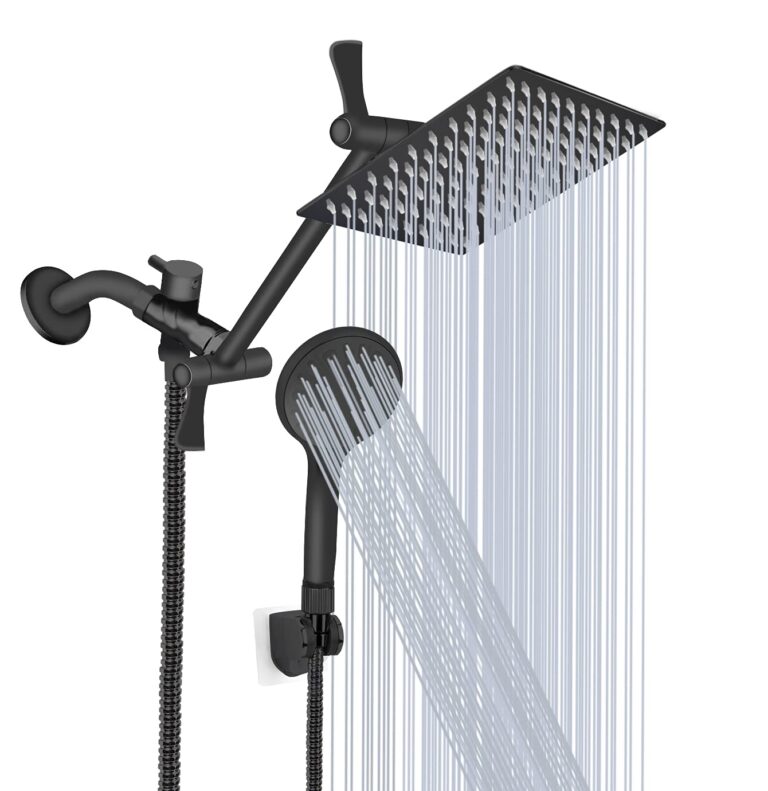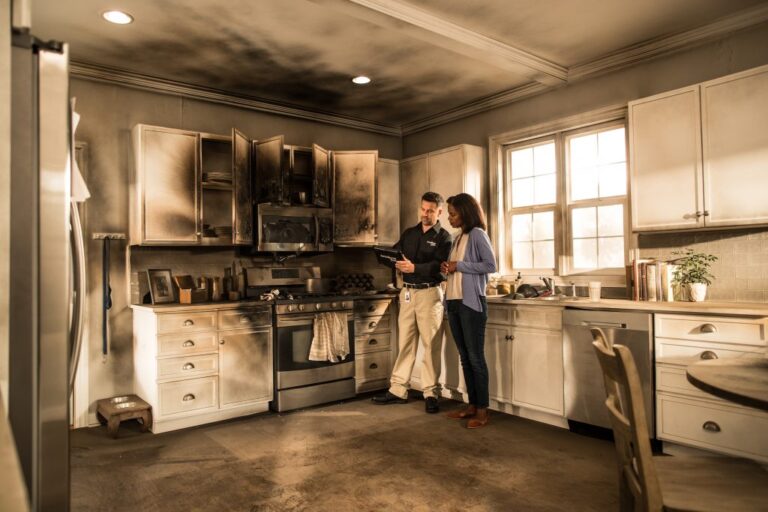What Are The 10 Steps For Organizing Kitchen Cabinets?
Organizing kitchen cabinets is an important step in creating a functional and efficient space. There are many ways to go about organizing your kitchen cabinets, but the following 10 steps will help you create an organized kitchen that is both aesthetically pleasing and functional. From purging items you no longer need, to creating a labeling system, these 10 steps will help you create an organized kitchen that will make cooking and meal prep easier.
Overview of Kitchen Cabinet Organization
Organizing your kitchen cabinets can seem like a daunting task, especially if you haven’t done it before. But having an organized kitchen can make life much easier, so it’s worth the effort. With a few simple steps, you can have your kitchen cabinets in order. In this blog post, we’ll provide an overview of the 10 steps for organizing kitchen cabinets, from decluttering to creating a system for storing items.
We’ll start by talking about the importance of decluttering and how it will help you organize your kitchen cabinets. We’ll also discuss how to determine which items should stay and which should go. Next, we’ll go over the different types of storage solutions and how to choose the right one for your kitchen cabinets. We’ll also cover the basics of organizing, such as grouping items by type and creating a label system.
Once your kitchen cabinets are decluttered and organized, we’ll discuss tips for maintaining the organization. This includes creating a regular cleaning schedule and setting up a system for putting items away after use. Finally, we’ll provide a few ideas for making the most of the space in your kitchen cabinets.
By following these 10 steps, you’ll be able to organize your kitchen cabinets efficiently and enjoy the benefits of a well-organized kitchen.
Step 1: Empty and Clean Your Cabinets
Organizing your kitchen cabinets can be an overwhelming task, but with the right preparation and tools, you can make it happen. To start, the first step is to empty and clean your cabinets. This will give you a blank slate to work with and allow you to assess the space you have to work with. Take the opportunity to sort through the items in your cabinets and throw out anything that is expired or no longer needed. Once the cabinets are empty, use a vacuum cleaner with a brush attachment to remove any built-up dirt and dust. Before you begin organizing, make sure to wipe down the inside of the cabinets with a damp cloth to get rid of any remaining dust and grime. Doing this will ensure your cabinets are sparkling clean and ready for you to get to work.
Step 2: Sort and Discard
Organizing kitchen cabinets can seem like a daunting task, but with a few simple steps, you can easily get your kitchen cabinets in order. Step two in the process is to sort and discard. This involves going through your cabinets and sorting items into categories, such as spices, canned goods, and baking supplies. You will also want to discard any items that are expired or you no longer need. It’s important to be ruthless when sorting and discarding, as anything that isn’t necessary will just take up valuable space. Once you’ve sorted and discarded, you can move on to the next step of organizing your kitchen cabinets.
Step 3: Designate a Home for Each Item
Step three in the process of organizing kitchen cabinets is to designate a home for each item. By doing this, it will help you maintain the organization of your cabinets and make it easier to find what you need when you need it. It’s important to have a system that will be easy to remember and follow. For example, all baking supplies should be grouped together, all pots and pans should be grouped together, and all utensils should be grouped together. This makes it easier to find what you need quickly and efficiently. Additionally, having a designated spot for each item will prevent any confusion or clutter. Once you have designated a home for each item, it’s time to move on to step four.
Step 4: Group Similar Items Together
Making sure your kitchen cabinets are organized is a great way to ensure efficiency and reduce stress while cooking and preparing food. Step 4 of organizing kitchen cabinets is to group similar items together. This includes items such as spices, baking ingredients, condiments, and canned goods. By grouping similar items together, you will be able to quickly locate the item you need and put it back after use. Additionally, you will be able to identify what items you need to replenish. For example, if you have all of your spices grouped together you can easily see if you are running low on cumin or paprika. This will help you better manage your kitchen inventory.
When grouping similar items together, be sure to make use of space-saving ideas. For example, consider utilizing a lazy Susan, stackable containers, or a tiered shelf. This will help you maximize the space in your cabinets and save time when searching for items. Additionally, you will have easy access to items that are stowed away in the back of the cabinet. Take the time to properly organize your kitchen cabinets and you will be rewarded with an efficient kitchen.

Step 5: Use Baskets, Containers, and Shelves
Organizing kitchen cabinets can seem daunting, but with the right approach, it can be an easy and rewarding task. Step 5 of this process involves using baskets, containers, and shelves to create a more organized and efficient kitchen. Baskets and containers are great for storing items like spices, utensils, and even small appliances. Shelving can be used to display items or store items that don’t fit in containers. By taking the time to create an efficient kitchen storage system, you can make cooking and baking easier and more enjoyable. With baskets, containers, and shelves, you can sort items by category, making it easier to find the items you need. You can also create an aesthetically pleasing kitchen with the help of baskets, containers, and shelves. So take the time to organize your kitchen cabinets today and make your kitchen an efficient and beautiful space.
Step 6: Label Everything
Organizing kitchen cabinets can be a daunting task, but it doesn’t have to be! One of the most important steps for an efficient and organized kitchen is to label everything. Labeling items can help you know where to find everything quickly and easily. It also helps you avoid clutter and confusion. It’s a great way to improve the look and feel of your kitchen and make it a more comfortable place to work. To make the process easier, here are some tips for labeling your kitchen cabinets.
First, make sure to use clear and visible labels. You want to make sure that the labels are easy to read from a distance. If you have multiple items that are similar, you can add a number or letter to each label so you can easily differentiate between them.
Second, use durable labels that won’t fade or tear over time. You want labels that will last for years, so be sure to pick ones made from quality materials.
Third, make sure to label each item in a way that makes sense to you. For example, if you have multiple types of spices, you can label them according to their type or purpose.
Finally, use a labeling system that makes sense to you and your family. This will make it easier for everyone to find what they need quickly and easily.
By following these tips for labeling your kitchen cabinets, you can ensure that your kitchen is organized and efficient. Labeling everything can help you avoid clutter and confusion, and it can make it easier to find what you need in a pinch. With a well-labeled kitchen, you can have an organized and stress-free cooking experience.
Step 7: Place the Most Frequently Used Items Within Reach
Step 7 of organizing kitchen cabinets is to place the most frequently used items within reach. This step is key to a successful kitchen cabinet organization plan. Place items that are used often at counter-level. This includes things like spices, condiments, and cooking utensils. Place items that are used less often in higher or lower cabinets, depending on their size and frequency of use. For example, place baking dishes in a higher cabinet if they are not used often, or place a slow cooker in a lower cabinet if it is used frequently. Organization is all about finding a system that works for you, so experiment with what works best for your kitchen.
Step 8: Invest in a Cabinet Door Organizer
Organizing kitchen cabinets can be a difficult and time consuming task. To make the process easier, it’s important to invest in specific products that can help to simplify the process. A cabinet door organizer is one such product that can help to maximize the space within the cabinets and provide easy access to items.
Cabinet door organizers are typically made from metal or plastic and can be easily attached to the inside of the cabinet door. They come in a variety of sizes and designs and can be used to store items like spices, canned goods, utensils, and cleaning supplies. Additionally, they can be adjusted to fit any size cabinet — making them a versatile and cost-effective storage solution.
Not only do cabinet door organizers save space, but they also make it easy to access items without having to rummage through the cabinet. This can help to save time when cooking or cleaning. Additionally, they can help keep the kitchen organized and looking neat.
Investing in a cabinet door organizer is an easy and effective way to make the most of the space within kitchen cabinets. It’s not only a practical solution but also a great way to save time and energy when organizing the kitchen.
Step 9: Store Foods Properly
Organizing your kitchen cabinets is no easy task, but with a few simple steps, you can get the job done quickly and efficiently. Step nine in the process is to store foods properly. This means grouping items together in a logical way and making sure that food items that can spoil quickly are kept in airtight containers. Additionally, it’s important to make sure that all food items are labeled with expiration dates.
When storing food items, it’s important to think about how often you use them. Perishable items such as fruits and vegetables should be kept in the refrigerator or freezer, while other items such as grains and canned goods can be stored in the pantry. Label all containers with the type of food inside and the expiration date. This will make it easier to identify what needs to be used up first and when it needs to be thrown away.
By taking the time to store foods properly, you can avoid the hassle of having to search through cluttered cabinets and save money by not having to throw away expired food items. Additionally, storing foods in a way that makes them easily accessible will make meal preparation and cooking much easier.
Step 10: Maintain Your Kitchen Cabinet Organization
Maintaining an organized kitchen cabinet may seem like a daunting task, but with a few easy steps, you can make sure that everything stays in its place. Start by taking inventory of what you have and making sure everything has its own designated area. Reassess your storage system regularly to make sure it’s still the most efficient option for you. Have a place for everything and keep like items together, and you’ll find that your kitchen cabinet organization will stay in order easily. Set aside time for regular maintenance and cleaning to ensure that your kitchen cabinets stay neat and organized. Additionally, label all items and consider taking pictures of the inside of each cabinet so that you always know where everything should go. Finally, stay on top of expiration dates and discard items that have expired. With these simple steps, you can keep your kitchen cabinets organized and running efficiently.
FAQs About the What Are The 10 Steps For Organizing Kitchen Cabinets?
1. What is the best way to start organizing kitchen cabinets?
A: The best way to start organizing kitchen cabinets is to take everything out of the cabinets and sort through your items. Discard anything that is no longer needed or is broken.
2. What items should I store in my kitchen cabinets?
A: Items that are best stored in kitchen cabinets include cookware, such as pots and pans, plates, bowls, and silverware; food storage containers; baking supplies; and small appliances.
3. What are some tips to make organizing kitchen cabinets easier?
A: Some tips for making organizing kitchen cabinets easier include grouping similar items together, using shelving and drawer dividers, and labeling items for easy identification. Additionally, using clear plastic containers can make finding items easier.
Conclusion
Organizing kitchen cabinets is a task that can seem daunting but with the right steps it can be a much easier process. The 10 steps for organizing kitchen cabinets are: 1) measure the space, 2) declutter and discard unused items, 3) create a plan, 4) group like items together, 5) designate zones, 6) use shelf organizers, 7) store items according to frequency of use, 8) utilize vertical space, 9) label items, and 10) keep it clean and organized. With these steps, you can have an organized and efficient kitchen cabinet system that will help make cooking and meal preparation easier and more enjoyable.




